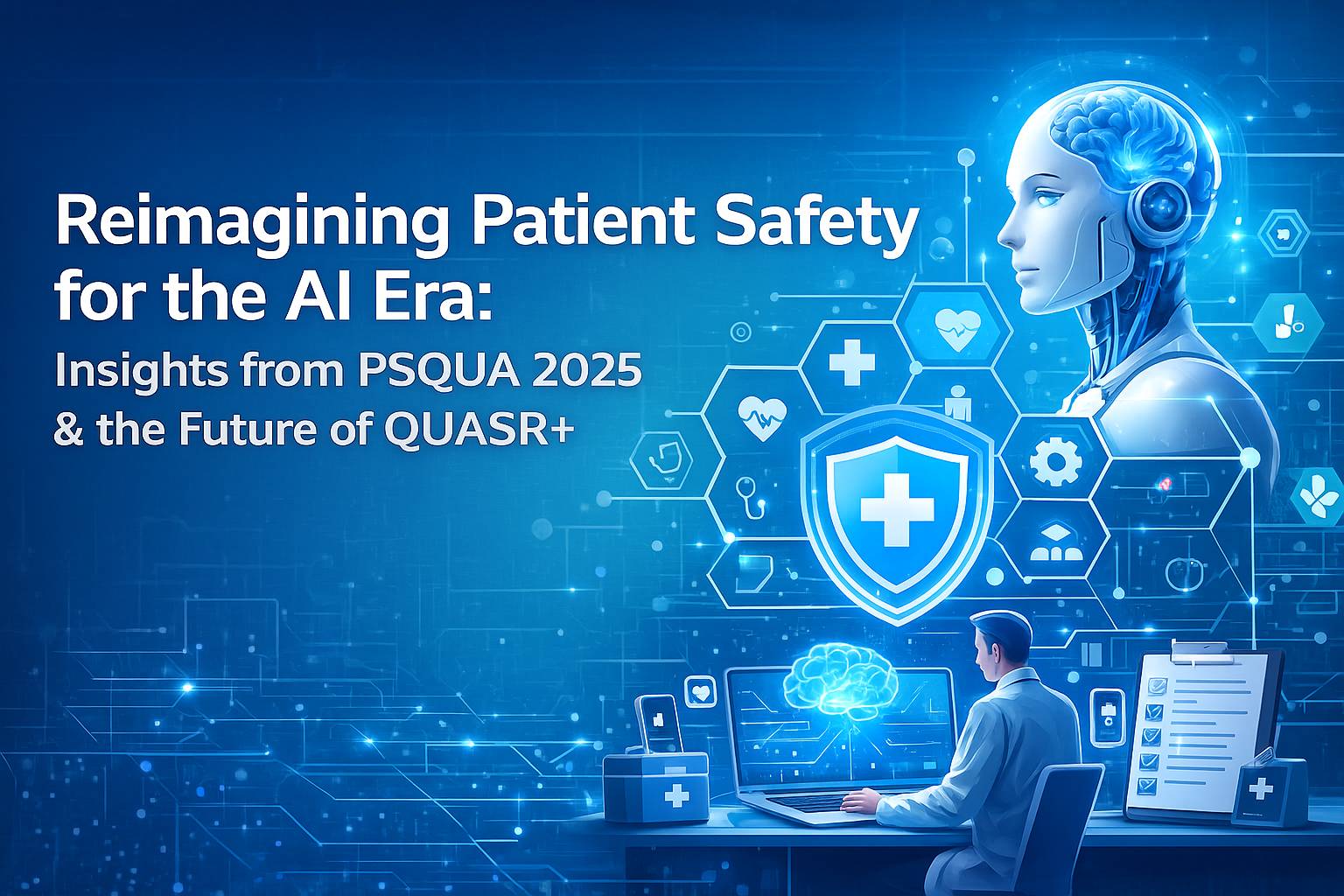
ECRI’s report on the Top 10 Patient Safety Concerns identifies the most pressing patient safety concerns in 2025. While these concerns may not be universally applicable across all healthcare settings, the list provides valuable guidance. This blog summarizes four key insights from the report.
Top 10 Patient Safety Concerns
- Risks of Dismissing Patient, Family, and Caregiver Concerns
- Insufficient Governance of Artificial Intelligence in Healthcare
- The Wide Availability and Viral Spread of Medical Misinformation: Empowering Patients through Health Literacy
- Medical Error and Delay in Care Resulting from Cybersecurity Breaches
- Unique Healthcare Challenges in Caring for Veterans
- The Growing Threat of Substandard and Falsified Drugs
- Diagnostic Error: The Big Three—Cancers, Major Vascular Events, and Infections
- Persistence of Healthcare-Associated Infections in Long-Term Care Facilities
- Inadequate Communication and Coordination during Discharge
- Deteriorating Community Pharmacy Working Conditions Contribute to Medication Errors and Compromise Patient and Staff Safety
Source: ECRI
Table of Contents
4 Key Takeaways
- Listening to Patients is Paramount
The foremost patient safety issue this year is the disregard for concerns raised by patients, their families, and caregivers. Failing to listen to or neglecting patient inputs can lead to misdiagnoses and treatment delays. This highlights the importance of involving patients in their healthcare decisions. Healthcare providers should prioritise empathetic communication and establish mechanisms that allow patients and families to express their concerns effectively.
- Technological Risks are Rising
Three out of the top five patient safety concerns identified in this year’s ECRI report are related to emerging technological risks:
a) The rise of AI in healthcare brings significant patient safety risks, particularly concerning insufficient governance and oversight.
b) The rampant dissemination of inaccurate health information, particularly through social media, which can lead patients to make harmful health decisions.
c) The threat of cyberattacks on healthcare systems, which can disrupt services and pose a serious threat to data breaches. - Persistent Healthcare Challenges Remain
Despite progress in patient safety, critical patient safety issues such as diagnostic errors, healthcare-associated infections, and poorly coordinated patient discharges remain persist. Substandard and falsified drugs also are a growing threat, while caring for veterans in non-military health settings present unique challenges. The report also mentions the deteriorating working conditions in community pharmacies can lead to medication errors and affect staff well-being.
- Adopting a Total Systems and Risk-based Approach to Safety
The report emphasizes that addressing these issues necessitates a holistic, proactive, and a sustainable safety management system to achieve better results. ECRI’s Total Systems Approach to Safety framework comprises of four key elements. Aligning these four elements in a safety management system will enable healthcare organizations to deliver reliable, safe and quality care.
- Culture, Leadership, and Governance
- Patient and Family Engagement
- Workforce Safety and Wellness
- Learning System
No healthcare organizations can address all the 10 safety concerns immediately. One should take a risk-based approach. This involves performing risk assessment on the identified risks, determining and prioritizing the necessary actions.
Lastly, the report outlines specific actions to mitigate each of the identified risks. A brief overview of the Top 10 patient safety concerns and the recommended actions are summarized in the table below.
ECRI Top 10 Patient Safety Concerns 2025
| Patient Safety Concerns | Brief Description | Recommendations (selected) |
|---|---|---|
| 1. Dismissing patient, family, and caregiver concerns | Overlooking or ignoring patient’s concerns can lead to missed diagnoses and delayed treatments. |
|
| 2. Insufficient governance of artificial intelligence (AI) | Without proper oversight, AI applications could produce biased or inaccurate results. |
|
| 3. Spread of medical misinformation | The proliferation of inaccurate health information, particularly through social media, can lead to harmful health decisions. |
|
| 4. Cybersecurity breaches | Threats to patient data and disruption in care delivery due to cyberattacks. |
|
| 5. Caring for veterans in non-military health settings | Unique challenges in addressing veterans’ specific health needs in civilian healthcare. |
|
| 6. Substandard and falsified drugs | The circulation of poor-quality or counterfeit medications poses serious health risks to patients. |
|
| 7. Diagnostic errors in cancers, vascular events, and infections | Misdiagnosis or delayed diagnosis of these critical conditions can lead to poor patient outcomes. |
|
| 8. Healthcare-associated infections in long-term care facilities | Residents at long-term care facilities are at heightened risk for infections, which can lead to severe complications. This underscores the need for rigorous infection control protocols. |
|
| 9. Inadequate coordination during patient discharge | Poor discharge planning can result in adverse events and readmissions. |
|
| 10. Deteriorating working conditions in community pharmacies | Stressful work place conditions leading to medication errors. |
|
Source: Adapted from ECRI Report
Conclusion - A New Era of Patient Safety
Healthcare is progressing at unprecedented pace, driven by technological advancements. Patient safety challenges are evolving and becoming more complex. This requires not only heightened vigilance on emerging technology risks but also a proactive stance in addressing long-standing patient safety concerns. In this context, ECRI report serves as a timely and valuable guide.
Related Blog: Top 10 Health Technology Hazards for 2025






